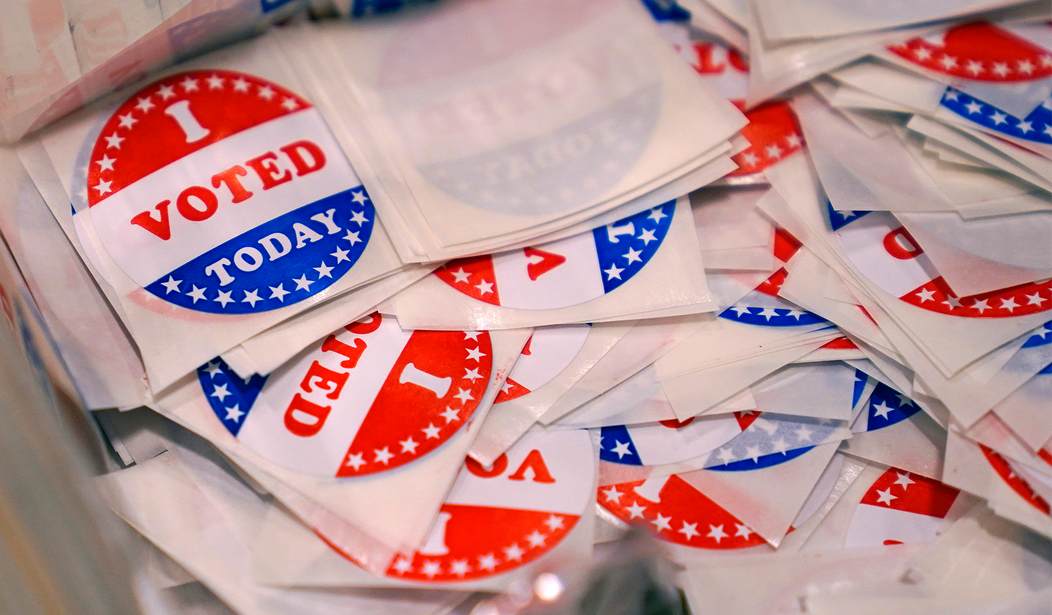You can just about take it to the bank: in every Presidential election, no matter who the candidates are, the Democratic nominee will get at least 40% of the popular vote and the Republican will get at least 40%. That leaves 20% in the middle who will usually decide the next White House occupant. Let’s look at this historically.
Going back 100 years (to 1924), there have been 24 Presidential elections. In those elections, only twice has the Democratic candidate received less than 40% of the popular vote (in 1924 when there was a strong 3rd party candidate, and in 1972, when far-left, out-of-touch George McGovern received 37.5% against the then-popular Richard Nixon). In every other election, at least 40% of the populace voted for the Democrat (even Jimmy Carter in 1980 received 41%).
Receiving less than 40% has happened four times to Republicans—in 1932 (39.6%) and 1936 (36.5%) against the best coalition-building, vote-buying Democratic candidate in history, Franklin Roosevelt; in 1964, when the weak Barry Goldwater still got 38.5% against another powerful vote-buyer, Lyndon Johnson; and in 1992, when Ross Perot syphoned off a lot of votes from George Bush, who ended up with 37.4% of the popular vote (the winner, Bill Clinton, only received 43%). So, except for 1924, even the weakest of candidates received at least 36.5% of the popular vote, and among 48 Republican and Democratic Party candidates in the last 100 years, less-than-40% has happened only 6 times. Barring gross unpopularity or 3rd party interference, each major party candidate will receive at least 40% of the people voting for them.
Of course, total popular vote doesn’t determine who the President will be. In their wisdom, to protect against possible democracy-tyranny, the Founding Father established the Electoral College, which is the body who actually selects the President. But, obviously, the more people who vote for a candidate, even with the peculiar Electoral College system, the better chance that candidate has of becoming President.
Recommended
True, more than once in American history, including twice so far this century, the man who received the most popular votes did not win the White House. But it’s rare, and not fully relevant to my point in this column.
In quick summation, we can assume that, next year, barring some currently unforeseen intervention, the Democratic candidate will receive at least 40% of the country’s votes, and the Republican candidate will do the same. That leaves the 20% in the middle who will most likely decide who the next President will be.
Thus, it behooves each party to look closely at that 20% (we tend to call these people “Independents”), determine its make-up and leanings, and plot a strategy to capture as many of those votes as possible. The strategy also must include individual states; popular vote in each state does, of course, determine who receives that state’s “electoral votes.” In recent years, a handful of states have become all important—Pennsylvania, Michigan, Wisconsin, Georgia, and Arizona probably being the most influential. Florida, thanks to Ron DeSantis, seems to be a strong red state now. North Carolina is a bit wishy-washy, but still tends to be Republican. Virginia has apparently gone blue in Presidential elections, though it will be interesting to see if Glenn Younkin can pull that state back to the right (probably not). The other 40+ states are largely settled—strongly blue or strongly red. Surprises can happen, of course, but Pennsylvania, Michigan, Wisconsin, Arizona, and Georgia are the major battleground states for next year.
Donald Trump, for reasons beyond my present purpose, lost all of them in 2020, mostly by small margins. 40% of the voters in each of those five states will vote for the Democratic candidate next year (Biden?); 40% will vote for the Republican candidate (no matter who he/she may be). How to win 10%+1 of the remaining voters is what a wise campaign will focus on.
I cannot here help the Republican Party plot a strategy on how to win those states. I don’t live in any of them, so I’m almost wholly ignorant of what needs to be done, in each of those regions, to secure a majority of the votes (protecting against Democratic Party cheating would be a good start). Each state has its peculiar geography, economic situation, racial and ethnic population diversity, and a whole host of other matters which need to be considered in any plan to capture the majority of its voters. I can give the Republicans no assistance with that, and it’s not my job anyway. It’s basically Ronna McDaniel’s, so Lord help the Republican Party next year.
I do have one piece of advice, however. Even in the reddest of states, don’t assume anything. Work and campaign like you might lose. The Democratic Party has shown absolutely no scruples in anything, but especially when it comes to political power. If they perceive even the slightest opportunity to steal a red state, they will certainly try. Any Republican who ever trusts any Democrat on anything is an utter fool and deserves what is probably coming to him.
It also wouldn’t hurt if the Republican candidate would spend a little time talking to traditional Democratic Party voters, especially minorities. Joe Biden isn’t exceedingly popular, and a little show of concern and compassion for the issues that attract “blue” voters might be rewarded. Compromising principles is totally unacceptable. But it never hurts to talk, listen, explain, and teach.
The 40-40-20 rule. It’s close to absolute in presidential elections. Coalition-building is thus critical; the Democrats are masters at it, the Republicans clueless, and I will analyze such soon in upcoming columns.























Join the conversation as a VIP Member